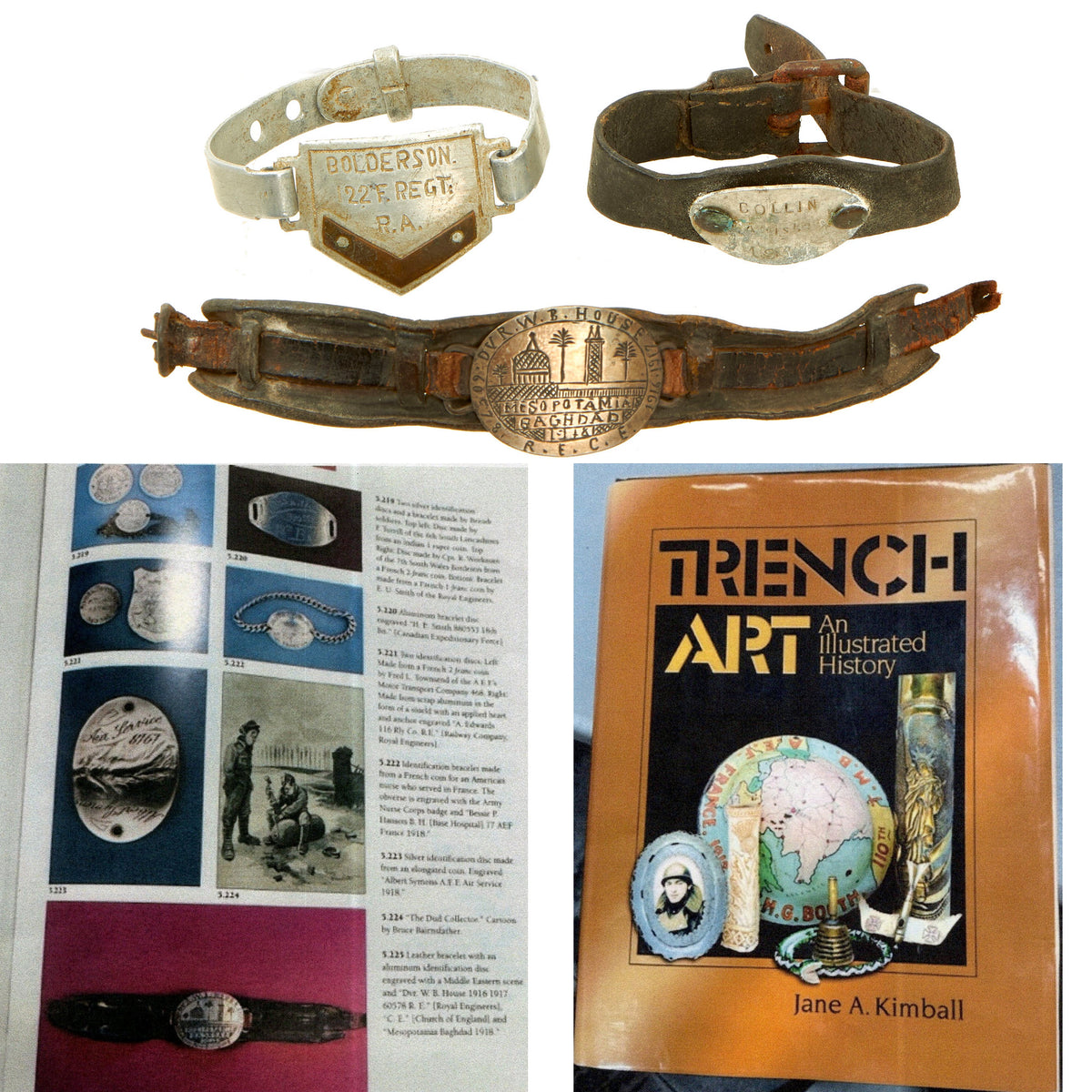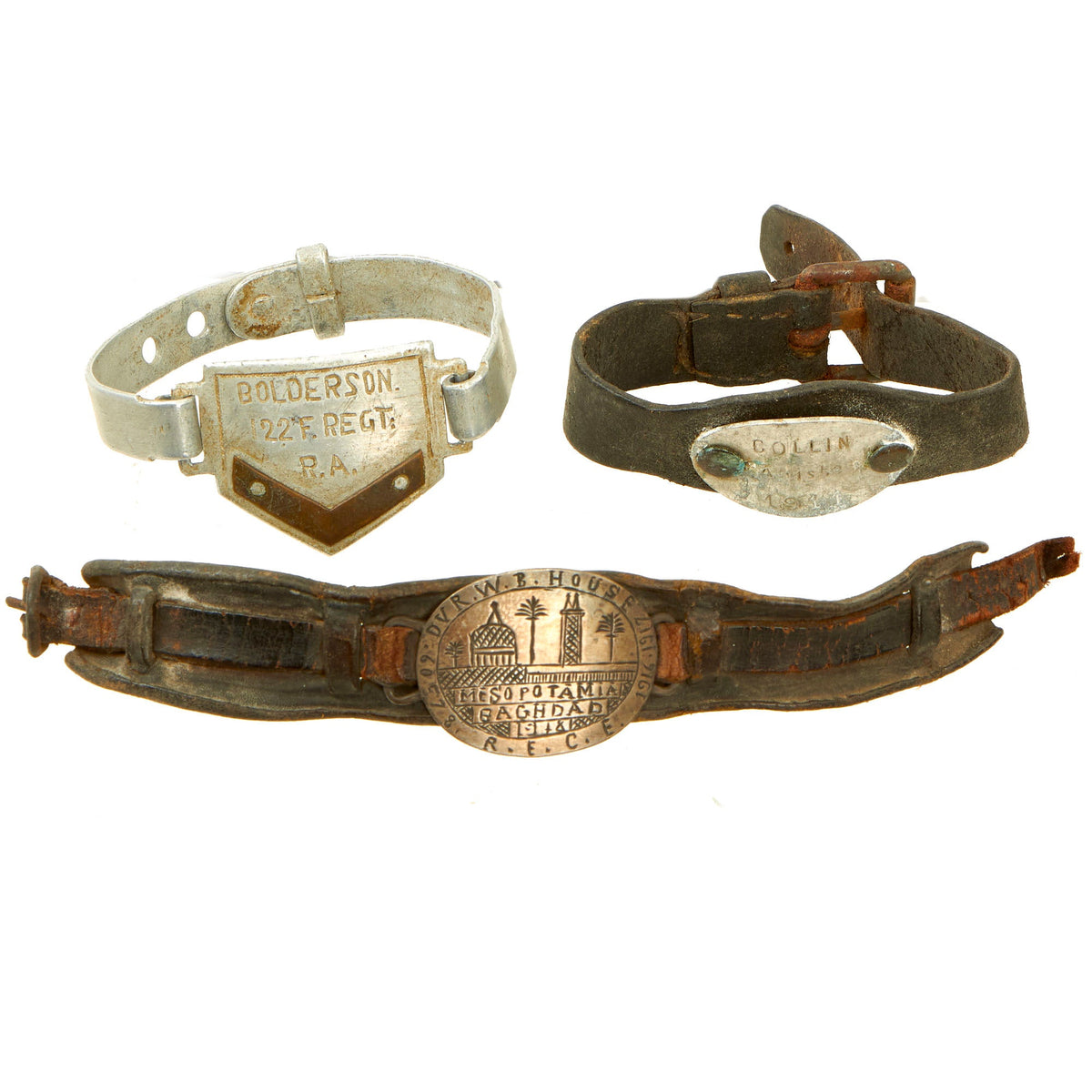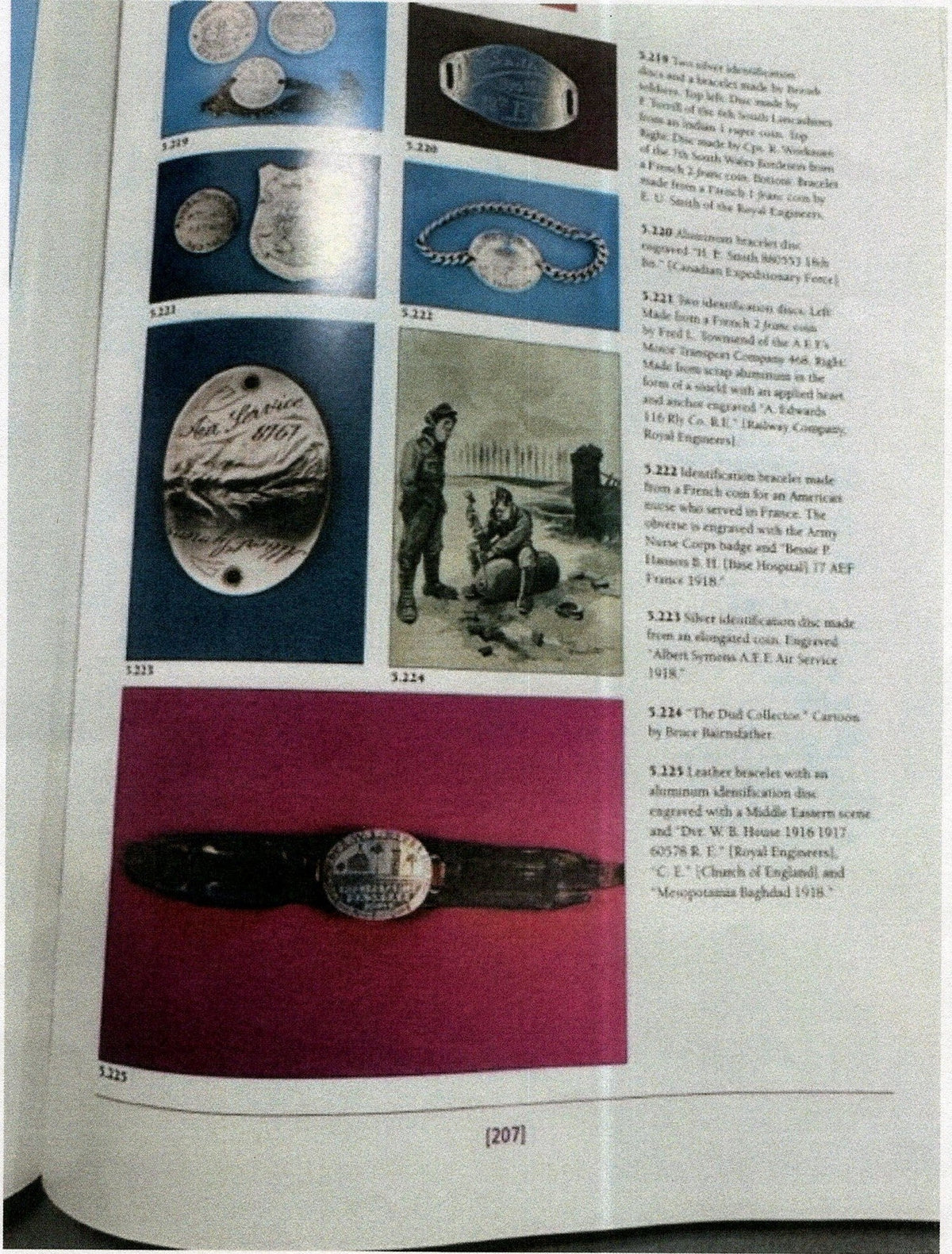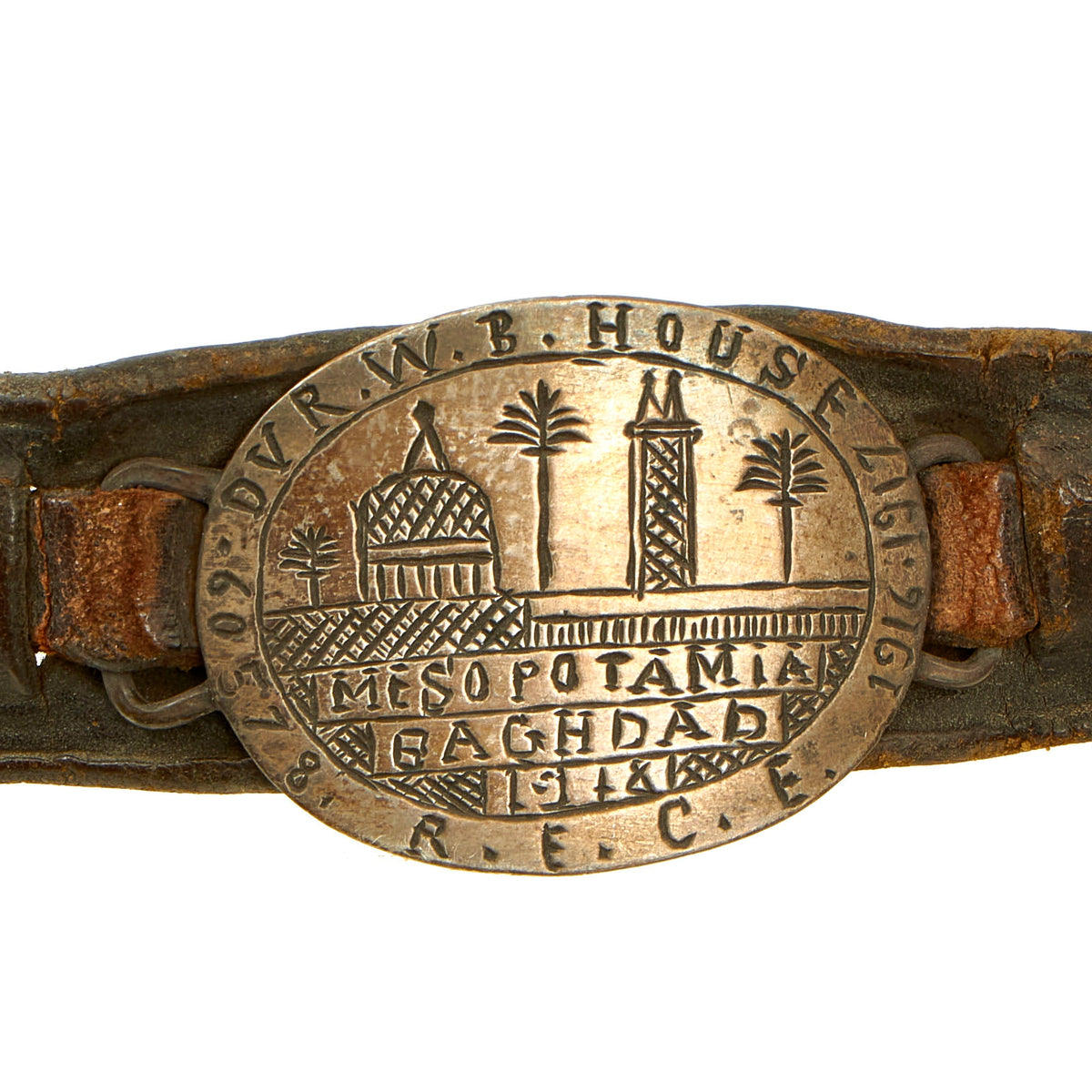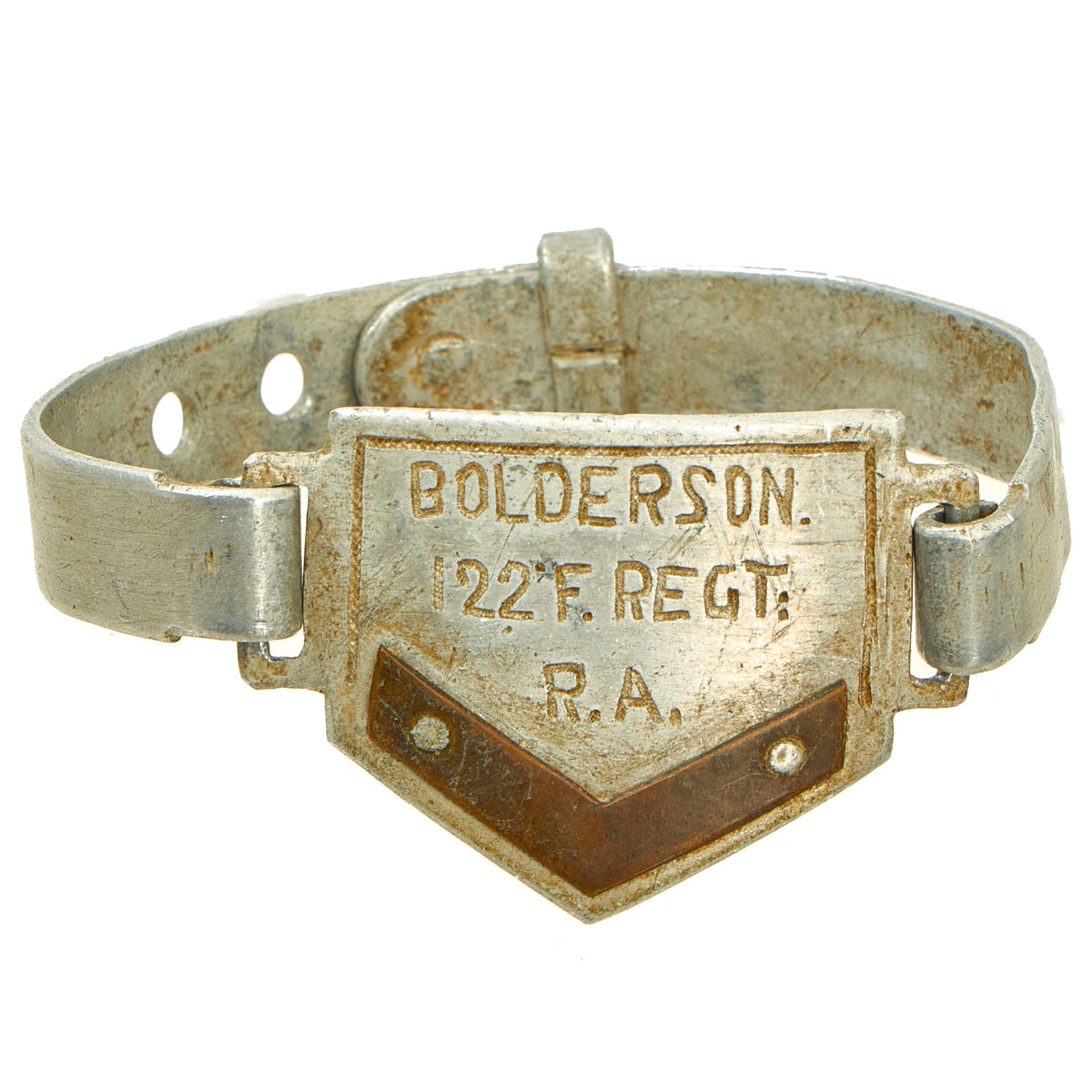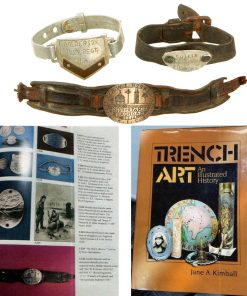Original British WWI Trench Art Bracelet Lot of 3 With (1) Featured In The Book “Trench Art, An Illustrated History” by Jane Kimball on Page 200 Original Items
$ 250,00 $ 100,00
Original Item: Only One Available. Trench art is any decorative item made by soldiers, prisoners of war, or civilians where the manufacture is directly linked to armed conflict or its consequences. It offers an insight not only to their feelings and emotions about the war, but also their surroundings and the materials they had available to them.
Not limited to the World Wars, the history of trench art spans conflicts from the Napoleonic Wars to the present day. Although the practice flourished during World War I, the term ‘trench art’ is also used to describe souvenirs manufactured by service personnel during World War II. Some items manufactured by soldiers, prisoners of war or civilians during earlier conflicts have been retrospectively described as trench art.
Reference books are an essential part of any collector’s knowledge and growth in their particular field of interest. The 2004 book “Trench Art, An Illustrated History” by Jane Kimball is a comprehensive study of Trench Art and does a wonderful job in presenting the historical context of trench art throughout history. The book covers about 400 pages and includes hundreds of illustrations as well as mountains of primary source material and original photographs that document the evolution, styles and construction of the trench art genre. The one bracelet is found on page 207.
The caption from the page is a lovely description for the bracelet:
“Leather bracelet with an aluminum identification disc engraved with a Middle Eastern scene and Dvr. W.B. House 1916 1917 60578 R. E. (Royal Engineers), C. E. (Church of England) and Mesopotamia Baghdad 1918.”
This is for Driver William Bernard House, Service Number 60578, Royal Engineers. We have not been able to locate much information on him but it does appear that he enlisted in 1915 and states that the theater of war served in was Egypt.
The overall condition is quite nice but the leather however is dried out and near fragile to the touch. The other two bracelets are in similar condition and both also serve as a wrist worn identification disc.
A lovely example ready for further research and display.
Fast Shipping with Professional Packaging
Thanks to our longstanding association with UPS FedEx DHL, and other major international carriers, we are able to provide a range of shipping options. Our warehouse staff is expertly trained and will wrap your products according to our exact and precise specifications. Prior to shipping, your goods will be thoroughly examined and securely secured. We ship to thousands clients each day across multiple countries. This shows how we're dedicated to be the largest retailer on the internet. Warehouses and distribution centres can be located throughout Europe as well as the USA.
Note: Orders with more than one item will be assigned a processing date depending on the item.
Before shipping before shipping, we'll conduct a thorough inspection of the items you have ordered. Today, the majority of orders will be delivered within 48 hours. The delivery time will be between 3-7 days.
Returns
The stock is dynamic and we cannot completely manage it because multiple stakeholders are involved, including our factory and warehouse. So the actual stock may alter at any time. It's possible that you may not receive your order once the order has been made.
Our policy is valid for a period of 30 days. If you don't receive the product within 30 days, we are not able to issue a refund or an exchange.
You can only return an item if it is unused and in the same state as the day you received it. You must have the item in its original packaging.
Related products
Uncategorized
Angolan Rebel 1970s era 60mm Inert Display Mortar from Angolan Civil War Original Items
Uncategorized
Uncategorized
Uncategorized
Uncategorized
Uncategorized
Uncategorized
Uncategorized
Band of Brothers ORIGINAL GERMAN WWII Le. F.H. 18 10.5cm ARTILLERY PIECE Original Items
Uncategorized
Uncategorized
Uncategorized
Uncategorized
Uncategorized
Uncategorized
Uncategorized
Uncategorized
Uncategorized
